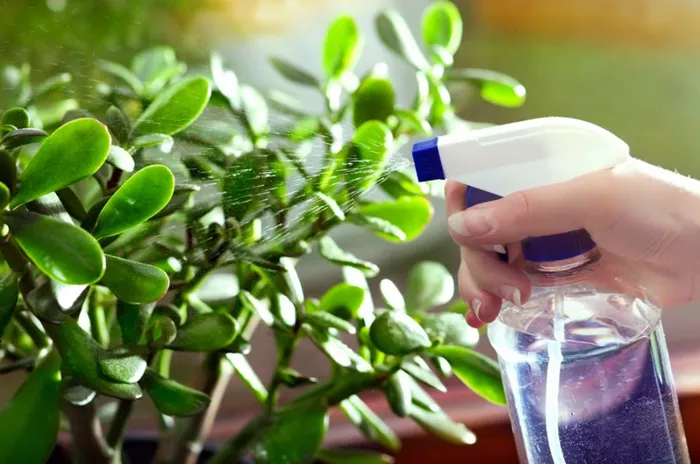Scale insects are one of the most common pests that affect indoor and outdoor plants. These tiny creatures can be very damaging if left untreated. They attach themselves to plant stems, leaves, and roots, feeding on the plant’s sap, which can lead to yellowing leaves, stunted growth, and even plant death. Recognizing and addressing scale infestations promptly is crucial for the health of your plants. In this article, we will explore the best treatments for scale on plants, providing you with effective and simple solutions.
What Are Scale Insects?
Scale insects are small, oval-shaped pests that can range from 1 mm to 10 mm in size. They are often mistaken for bumps or spots on the plant’s surface. These insects secrete a waxy coating that protects them from predators and pesticides. While there are many types of scale insects, they are typically divided into two categories: soft scale and armored scale.
Soft Scale vs. Armored Scale
Soft scale insects produce a waxy, sticky secretion that can cover the body, making them harder to remove. Armored scales, on the other hand, have a hard, protective shell that makes them difficult to treat. Both types feed on plant sap, which weakens the plant over time.
How to Identify Scale Infestations
Identifying scale insects early is crucial to preventing significant damage. Common signs of a scale infestation include:
- Sticky, shiny substances (honeydew) on leaves or surfaces.
- Yellowing leaves or leaf drop.
- Small bumps or spots that appear on stems or leaves.
- A general decline in the plant’s overall health.
The 7 Best Treatments for Scale on Plants
There are various methods to treat scale insects, and the right treatment depends on the severity of the infestation and the type of plant affected. Below are some of the best treatment options:
1. Manual Removal
If the scale infestation is small, manual removal is one of the most effective solutions. You can use a soft brush or cotton swab dipped in rubbing alcohol to gently scrub the scales off the plant’s surface. This method works best for plants with a manageable number of scales.
2. Pruning Infected Areas
For larger infestations, pruning the affected parts of the plant is essential. Remove leaves, stems, or branches that have a high concentration of scale insects. Dispose of the pruned material carefully to avoid spreading the pests to other plants.
3. Insecticidal Soap
Insecticidal soap is an effective and plant-safe option for treating scale insects. These soaps contain fatty acids that break down the insect’s protective coating, allowing the pesticide to penetrate and kill the scale. Simply spray the solution directly on the affected areas, ensuring thorough coverage.
4. Horticultural Oil
Horticultural oils, like neem oil, are another excellent option for controlling scale. These oils suffocate the insects by blocking their breathing pores. They also help to eliminate any eggs that might be present. Apply the oil during the dormant season to avoid damaging new growth.
5. Systemic Insecticides
For severe infestations, systemic insecticides can be used. These insecticides are absorbed by the plant and spread throughout its tissue, killing the scale insects when they feed on the plant. However, systemic insecticides can be harmful to beneficial insects, so they should be used as a last resort.
6. Biological Control
Biological control involves introducing natural predators of scale insects to your garden. Ladybugs, parasitic wasps, and lacewings are examples of beneficial insects that will feed on scale insects. This method can be highly effective when combined with other treatments.
7. Preventative Measures
Preventing scale infestations in the first place is the best strategy. Regularly inspect your plants for signs of pests, and keep your garden clean and healthy. Avoid overwatering, as scale insects thrive in moist conditions. Also, ensure that new plants are quarantined before introducing them to your garden to prevent the spread of pests.
Conclusion
Scale insects can be a serious problem for plants, but with the right treatment and care, you can manage and eliminate these pests effectively. From manual removal to chemical treatments and biological control, there are many strategies to choose from. Always act quickly to prevent further damage to your plants. By using the right treatments and staying vigilant, your plants can thrive without the threat of scale insects.
FAQs about Scale on Plants
1. How can I tell if my plant has scale insects?
Look for small, waxy bumps on the stems or leaves of the plant. You might also notice sticky substances or a decline in the plant’s health.
2. Can scale insects harm my plants?
Yes, they feed on the plant’s sap, which weakens the plant over time, leading to yellowing leaves, stunted growth, and even plant death if untreated.
3. Are chemical treatments necessary to control scale insects?
Chemical treatments, like insecticidal soap or horticultural oils, can be effective, but they should be used when other, less harmful methods don’t work.
4. How can I prevent scale infestations in my garden?
Inspect plants regularly, quarantine new plants, and ensure that your garden has proper drainage and is not overwatered to reduce the risk of scale infestations.


